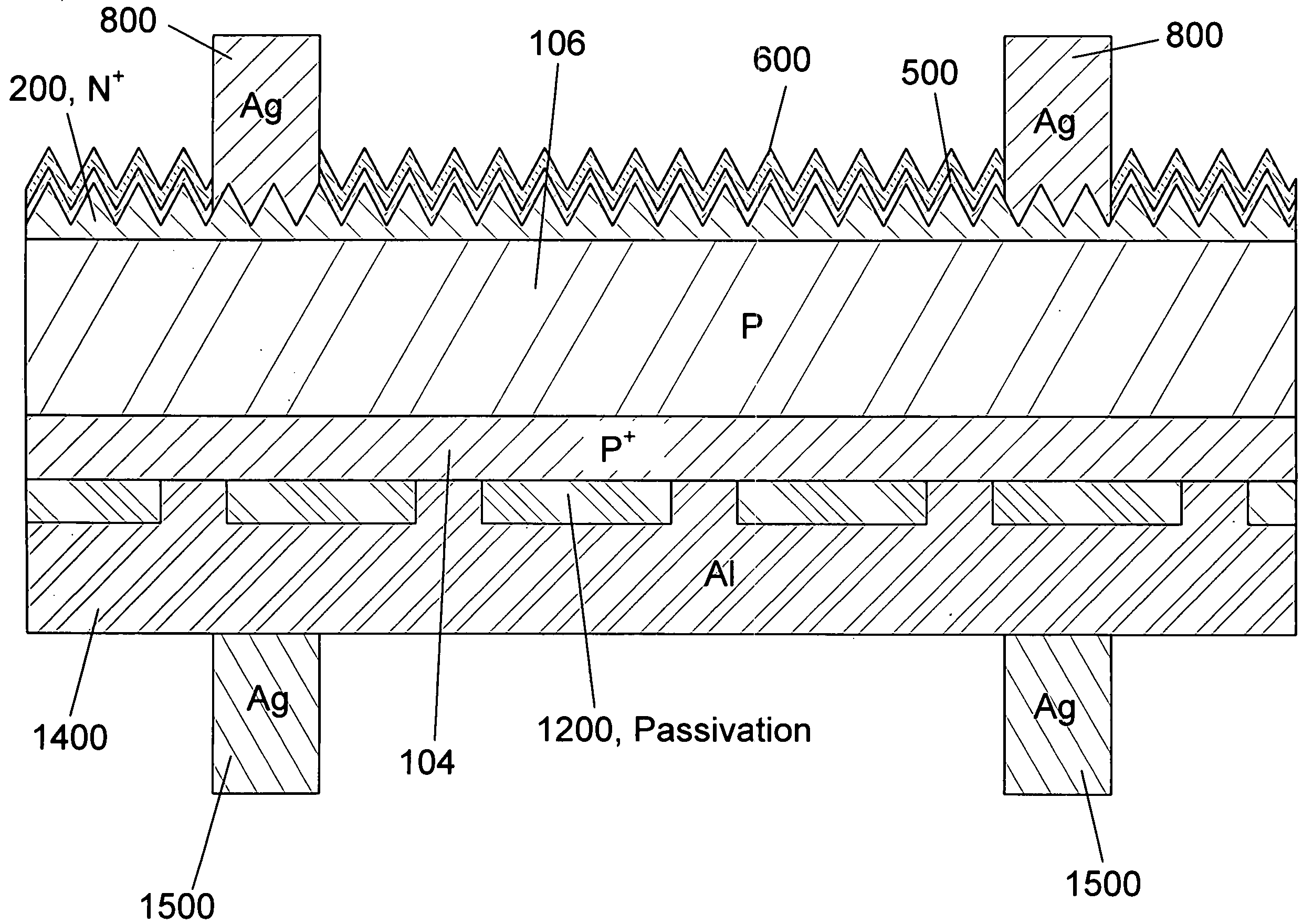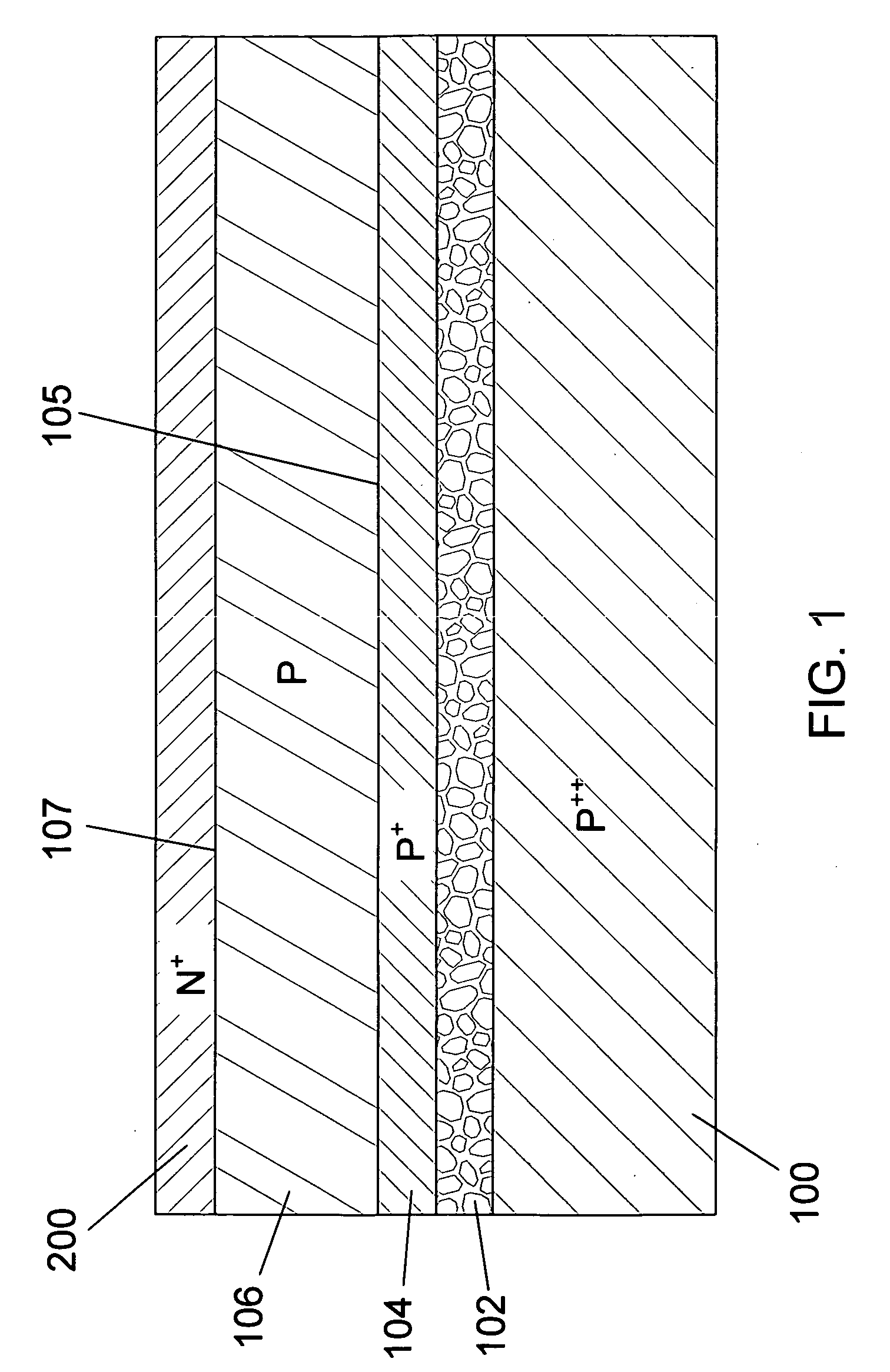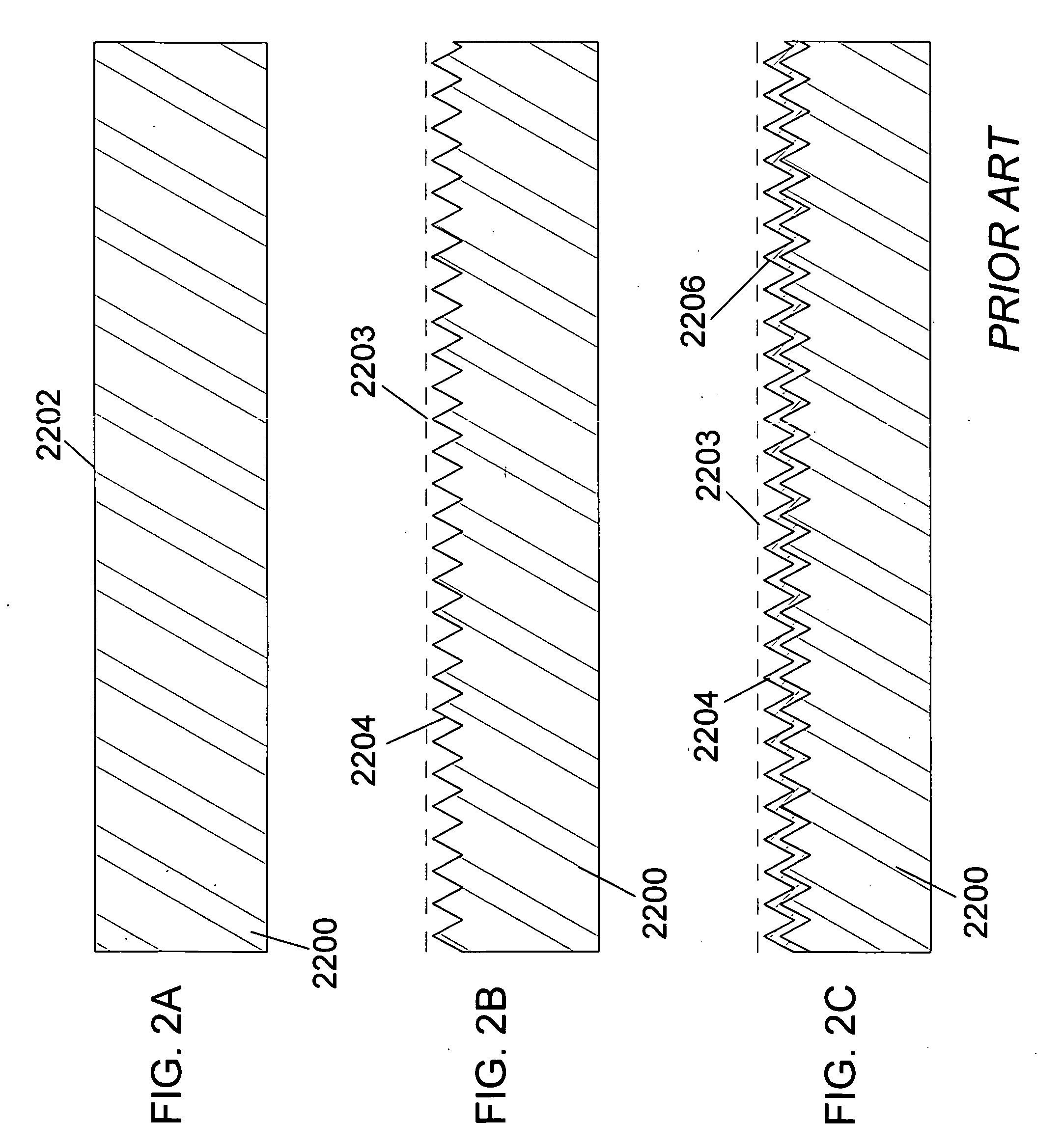Thin two sided single crystal solar cell and manufacturing process thereof
a solar cell, two-sided technology, applied in the field of solar cell manufacturing, can solve the problems of loss of light-generated electrons near the surface of the solar cell, limited thermal diffusion characteristics of the bulk material dopant profile created by the furnace diffusion, etc., and achieves the effects of high material quality, high thermal reorganization of silicon, and high material quality
- Summary
- Abstract
- Description
- Claims
- Application Information
AI Technical Summary
Benefits of technology
Problems solved by technology
Method used
Image
Examples
Embodiment Construction
[0041]FIGS. 1 to 13 illustrate exemplary steps in the fabrication process for a thin photovoltaic cell according to one embodiment of the invention. Most figures are schematic side cross-sectional views in which the vertical dimensions are greatly enlarged relative to the horizontal dimensions. Note that this exaggeration of the vertical scale makes the profiles of the isotropic etch steps appear as vertical lines since any undercutting occurring during the isotropic etch process cannot be seen when the vertical scale is greatly enlarged.
[0042]A silicon photovoltaic (PV) wafer 100 illustrated in the schematic side cross-section view of FIG. 1 is a single-crystal wafer of the type used for semiconductor integrated circuits or can be of solar grade which has typically been used in conventional single crystal silicon solar cells. Four layers are grown on its top surface: a thin porous silicon layer 102, a P+-type layer 104, a P-type layer 106, and an N+-type layer 200. In this embodime...
PUM
| Property | Measurement | Unit |
|---|---|---|
| thickness | aaaaa | aaaaa |
| thickness | aaaaa | aaaaa |
| thickness | aaaaa | aaaaa |
Abstract
Description
Claims
Application Information
 Login to View More
Login to View More - R&D
- Intellectual Property
- Life Sciences
- Materials
- Tech Scout
- Unparalleled Data Quality
- Higher Quality Content
- 60% Fewer Hallucinations
Browse by: Latest US Patents, China's latest patents, Technical Efficacy Thesaurus, Application Domain, Technology Topic, Popular Technical Reports.
© 2025 PatSnap. All rights reserved.Legal|Privacy policy|Modern Slavery Act Transparency Statement|Sitemap|About US| Contact US: help@patsnap.com



